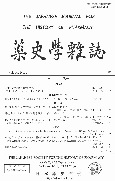Volume 58, Issue 2
Displaying 1-10 of 10 articles from this issue
- |<
- <
- 1
- >
- >|
-
2023Volume 58Issue 2 Pages 73-77
Published: December 31, 2023
Released on J-STAGE: February 24, 2024
Download PDF (1525K) -
2023Volume 58Issue 2 Pages 78-86
Published: December 31, 2023
Released on J-STAGE: February 24, 2024
Download PDF (2095K) -
2023Volume 58Issue 2 Pages 87-94
Published: December 31, 2023
Released on J-STAGE: February 24, 2024
Download PDF (2979K) -
2023Volume 58Issue 2 Pages 95-99
Published: December 31, 2023
Released on J-STAGE: February 24, 2024
Download PDF (1215K) -
2023Volume 58Issue 2 Pages 100-109
Published: December 31, 2023
Released on J-STAGE: February 24, 2024
Download PDF (1850K) -
2023Volume 58Issue 2 Pages 110-127
Published: December 31, 2023
Released on J-STAGE: February 24, 2024
Download PDF (1672K) -
2023Volume 58Issue 2 Pages 128-136
Published: December 31, 2023
Released on J-STAGE: February 24, 2024
Download PDF (1258K) -
2023Volume 58Issue 2 Pages 137-147
Published: December 31, 2023
Released on J-STAGE: February 24, 2024
Download PDF (1217K) -
2023Volume 58Issue 2 Pages 148-152
Published: December 31, 2023
Released on J-STAGE: February 24, 2024
Download PDF (1411K) -
2023Volume 58Issue 2 Pages 153-154
Published: December 31, 2023
Released on J-STAGE: February 24, 2024
Download PDF (1011K)
- |<
- <
- 1
- >
- >|
